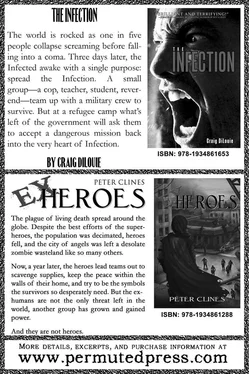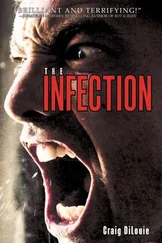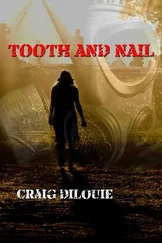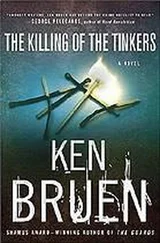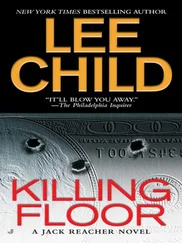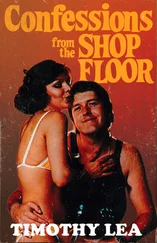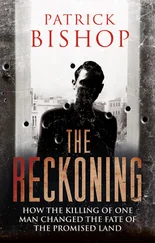THE KILLING FLOOR
Craig DiLouie
Published by Permuted Press at Smashwords.
Copyright 2012 Craig DiLouie
www.PermutedPress.com
Acknowledgments
Special thanks to Renée Bennett, Jessica Brown and Elizabeth Stang for their editing support. I owe an additional thanks to former Chief Petty Officer James R. Jackson, who reviewed most military-themed content for accuracy.
Note
A significant amount of research went into this novel to make the setting and action as realistic as possible. That being said, all of its characters are completely fictional, and any resemblance to persons living or dead is entirely coincidence. Further, many places and organizations are either fictional or fictionalized. For example, liberties were taken in the geography, towns and roadways between southeastern Ohio and Washington, DC to enhance the story. Military units are also fictionalized, with the Fifth Stryker Cavalry Regiment being an invented unit borrowing elements of several existing units in the United States Army.
For my beautiful family, my neverending worries for whom fuel these apocalyptic dreams.
Outbreak
On the second floor of the West Wing of the White House, the meeting adjourned for lunch early because the machine gun was too loud.
Dr. Travis Price, assistant director with the Office of Science and Technology Policy, stared out the window into the smoky haze that had settled onto the city.
Outside, the Marines were still shooting the Infected off the fence.
The conference room doors opened and servers entered in crisp blue suits, pushing carts across the carpet. They flinched at the machine gun’s coughing bark.
“Oh my God,” said Sanders, standing at another window.
“What?” someone said, his voice edged with panic.
“It’s one of the gardeners.”
Travis looked down at the green lawn, but saw nothing except for an infected woman climbing the fence. She flopped to the ground. The machine gun stopped firing.
“What happened to him?”
“Nothing. He’s down there pruning the rosebushes.”
A few people laughed.
“Now that’s loyalty,” someone said.
“Hope he’s getting time and a half.”
Amazing world we now live in , Travis thought, where the mundane shocks us .
The Continuity of Government Task Force had been thrown together on the epidemic’s first day. The President wanted more authority to deal with the spread of the Wildfire Agent, the official name for the Infection. Congress had to approve everything. The room was packed with bureaucrats, policy wonks and congressional staffers; Travis had been attached to the task force as science adviser. They argued posse comitatus , the Insurrection Act of 1807, the lessons of Operation Noble Eagle. Mostly, they fought over the boundaries of executive authority and ways to legitimize mass slaughter. Busts of George Washington and Benjamin Franklin, placed in niches on the far wall, observed the proceedings with mild disdain.
Travis wondered if all this debate over legal interpretations was some kind of institutional denial, the equivalent of Nero fiddling while Rome burned.
His stomach growled. He had eaten little over the past few days, and his body needed food.
He approached the lunch table, picked up a sandwich, and stared at it. Tuna fish, he observed, with the crusts expertly cut off. He marveled at the amount of care in its preparation. He took a bite, chewed, forced himself to swallow. Packs of Infected ran through the nation’s cities on a series of TV screens recessed into the wall just above his head. Two of the stations, taken over by the Emergency Alert System, scrolled evacuation instructions.
So far, he had been asked to contribute little to the meeting—which was good, since he had no insights to offer. Everyone knew what he knew: Seven days ago, one in five people around the world fell down screaming. Four days ago, they awoke from a catatonic state and began attacking others and infecting them with some type of disease, plunging the world into hell. It was all right there on the TV screens.
The big question was why, and nobody had an answer to that.
CNN showed a mob tearing apart a squad of riot police in Chicago. Someone gasped. The violence was agonizing to watch. The Infected were like animals. The cops fought desperately, pushing them back and flailing with their batons.
“No, no, no,” someone sobbed.
“Hey,” Travis hissed to two men standing near him. Fielding and Roberts, clean-cut men with hard faces and astronaut builds. They worked for the office of the National Security Advisor. “Should we be allowing this on the air?” He felt sure the government should be trying to control the flow of information in a crisis like this. Censorship was wrong, of course, but could also be practical to prevent panic.
Fielding and Roberts exchanged a glance.
“Why try to cover up or deny something that’s happening everywhere?” said Roberts.
“Stick with science, Doc,” Fielding said.
Travis turned away, his face burning with embarrassment. He wondered why he’d bothered. Outside the realm of science in which he excelled, he was awkward around other people, always saying the wrong thing.
On the TV screen, three of the five fallen cops were getting back onto their feet. While it took three days for the screamers to awaken and attack their caregivers, once bitten, conversion took mere minutes. Heads jerking, the cops ran to join a pack of Infected.
“The biggest question is why they run so fast.”
“What’s that, Dr. Price?” Roberts asked him.
Travis blinked, unaware he had voiced the thought aloud. “Uh, the biggest question on the tip lines,” he said. “Why the Infected can run.”
The men stared at him blankly. Travis moved aside to allow other people closer to the sandwiches. The crowded room buzzed with gossip and debate.
He went on, “A lot of people think the Infected are zombies. Like zombies in old movies. Dead people who have come back to life. Zombies are slow, right? People don’t understand.”
“Probably a good thing too, Doc,” Fielding said. “If people think their loved ones are already dead, fewer of them might hesitate. They’ll kill them on sight, if they have a weapon.”
“But we’re not telling people to kill the Infected,” said Travis.
“Of course we’re not telling them that,” said Fielding.
“I guess if they were zombies, they’d be dead and have no rights and then it would be okay to tell people to kill them,” Travis said. “Too bad about that.”
“Interesting,” Fielding said flatly, his hard eyes betraying his contempt.
“Dr. Price, do you mind if I talk to you alone for a moment?” Roberts asked him.
“Certainly,” Travis said with relief he hoped did not come across as too obvious.
The man gestured to the window and they moved away from the others. Travis winced at the man’s breath, sour from endless tension.
“My wife fell down,” he said.
“SEELS?” Travis asked. Sudden Encephalitic Lethargica Syndrome, or SEELS, was the formal, if somewhat broad, term scientists were using to describe the mystery disease that made more than a billion people collapse screaming, bringing the world to a crashing halt.
“Yeah,” said the man, running his hand over his buzz cut. “I got her into a hospital. Now she’s one of those maniacs out there.”
“I’m sorry,” Travis said mechanically.
“Listen, she’s pregnant. Eight months.”
“Oh.”
“My kid—is he one of them or one of us?”
Travis opened his mouth and shook his head. Theories flooded his brain, fighting to be spoken, but he held them back. Roberts wanted some type of assurance, but Travis did not know the right words. He was as bad at platitudes as he was at small talk.
Читать дальше
